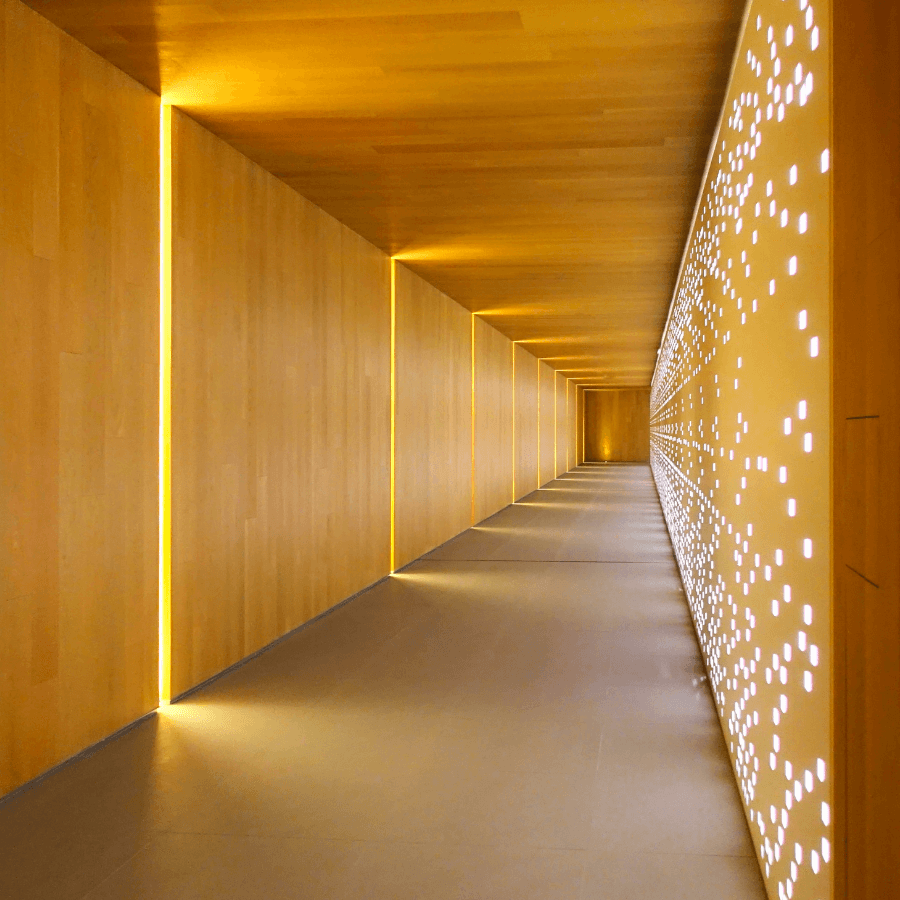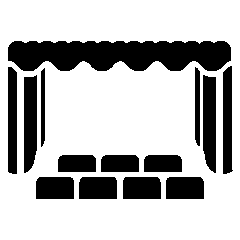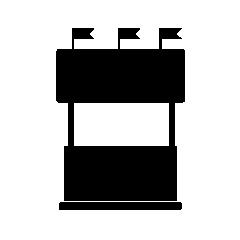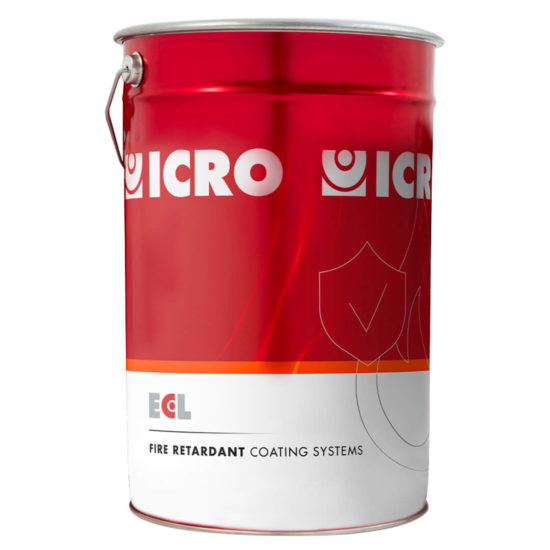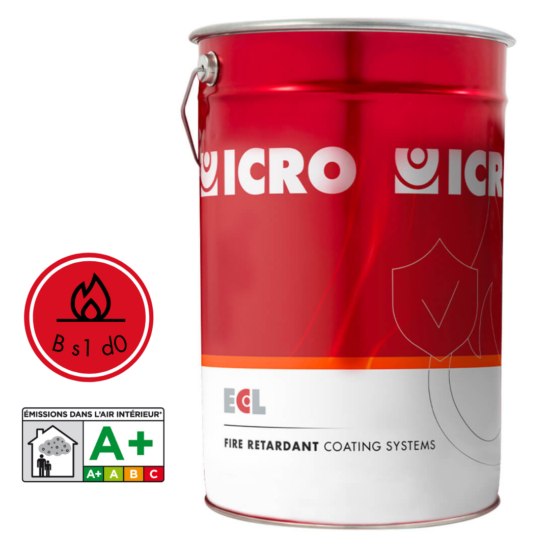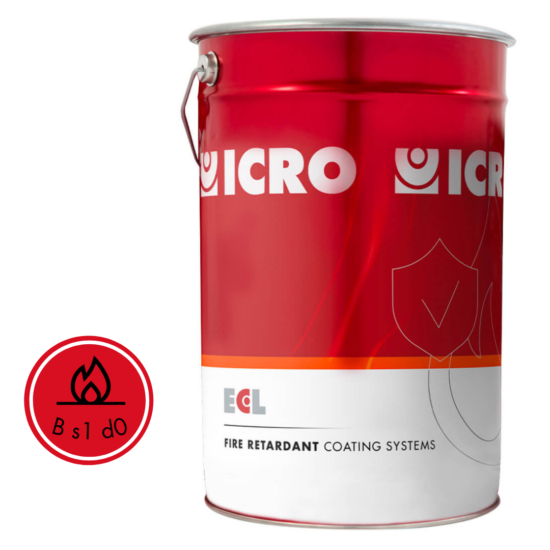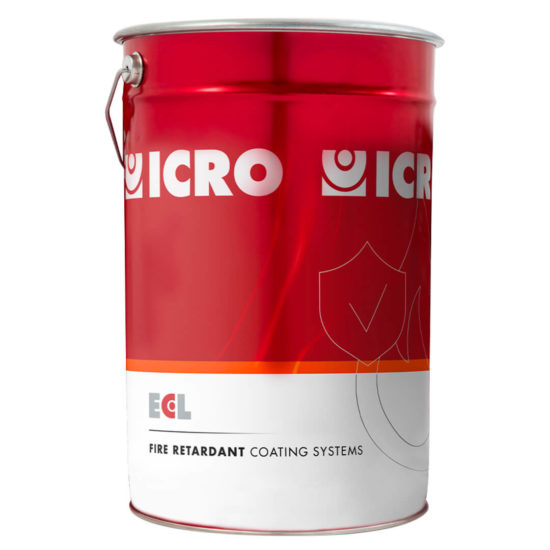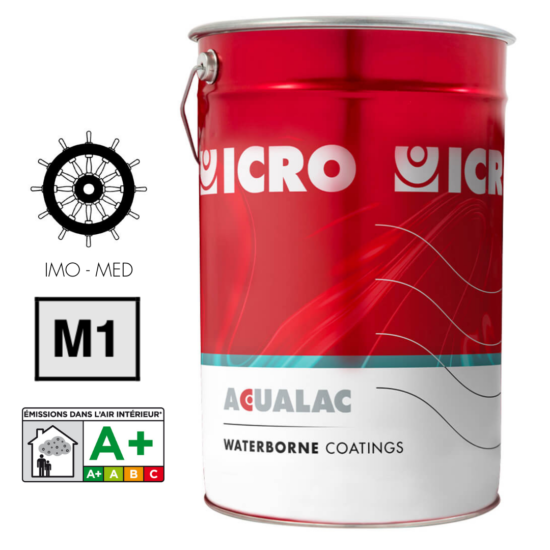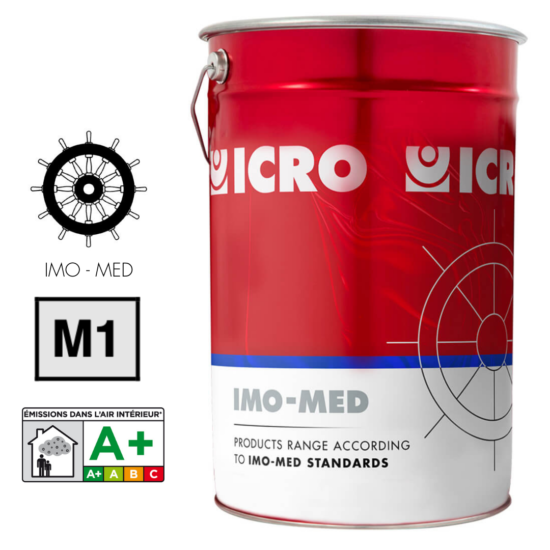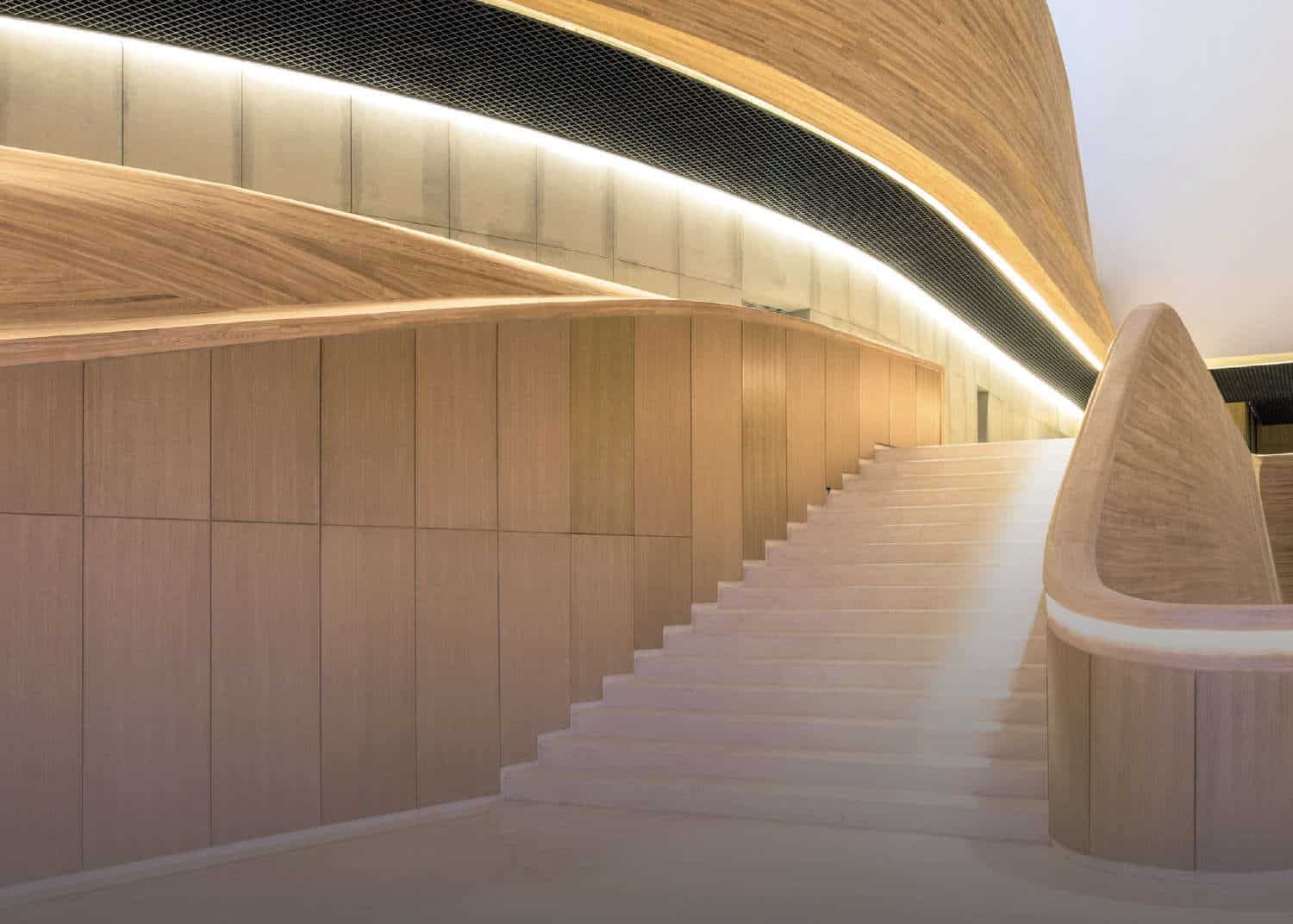
Fire-retardant coatings
Discover all productsFire-retardant paint
Preserving the environment and protecting the people who work or live in it is the objective to which ICRO contributes by designing and developing innovative, broadly applied and high-tech solutions. From this intent the ECL line of fire retardant paints was born, which aims to make public places safer by delaying the ignition of fire.
A material increasingly chosen for building and furnishing projects, wood is mainly made of cellulose and lignin, substances characterized by a high carbon content, which together with hydrogen and oxygen, are responsible for the combustion process. For each combustible material the specific reaction to fire can be established, i.e. its degree of participation in the fire to which it is subjected.
Fireproofing capacity
The products of the ECL line have a proven fire retardant capacity, combined with a special attention to enhancing the appearance of exposed wood. The reaction technology and the high aesthetic standards make the products of the line ideal for all types of wooden furniture, within the fields of application envisaged and the requirements of designers and applicators.
On the basis of data derived from reaction to fire tests carried out in accordance with European standard EN 13501-part 1, the fire retardant coating product is classified in EUROCLASS B s1, d0.
The classification is valid for the protection of all wood-based substrates under the conditions of use on walls or ceilings, in accordance with the technical criteria specified in the standards:
× EN 13823 Fire reaction tests for building products exposed to a thermal attack of a single burning element
× EN ISO 11925 Reaction to fire tests for building products-part 2: ignition when subject to small flame
ECL
Thanks to the research and experimentation conducted, ICRO offers the market cutting-edge technology.
ECL products make it possible to reduce the fire reaction of wooden elements.
After a correct coating cycle, the product penetrated into the wood surface guarantees a significant reduction of the oxygen supply in contact with the affected area. ECL products are widely used for furniture or furnishing accessories in contexts where fire safety is a fundamental factor, established by law.
Applications
Euroclasse B s1, d0
Regulations
For wood-floor construction products and elements excluded – the European standard that regulates the reaction to fire classification is UNI EN 13501-1, while the reaction to fire class is established by the following standards:
EN 13823:2014 – Reaction to fire tests of construction products – excluding floors exposed to a thermal attack produced by a single burning object.
EN 11925-2: 2005 – Reaction to fire tests – ignitability of products subjected to direct flame attack. Second test using a single flame.
Euroclass
The materials classified according to the Euroclasse: A1, A2, B, C, D, E, F. The materials classified A1 are non-combustible and those certified A2, B, C, D, E, F burn in ascending order.
The European classification also provides for the verification
of smoke, dripping and other parameters, which are included in the definition of the fire reaction class with special abbreviations:
S: smoke – classified from 1 to 3
D: drops – classified from 0 to 1
Italian and European regulations
Even in the presence of a European classification, in Italy only for application in the furniture sector, national homologation by the Ministry of the Interior is still necessary, as provided for by the Ministerial Decree of 6 March 92. The coatings products tested in this way are effective as long as the application restrictions provided for by the UNI 9796 standard are respected. For use on walls or ceilings in activities subject to fire prevention, construction materials must comply with the fire reaction requirements according to the European classification.


